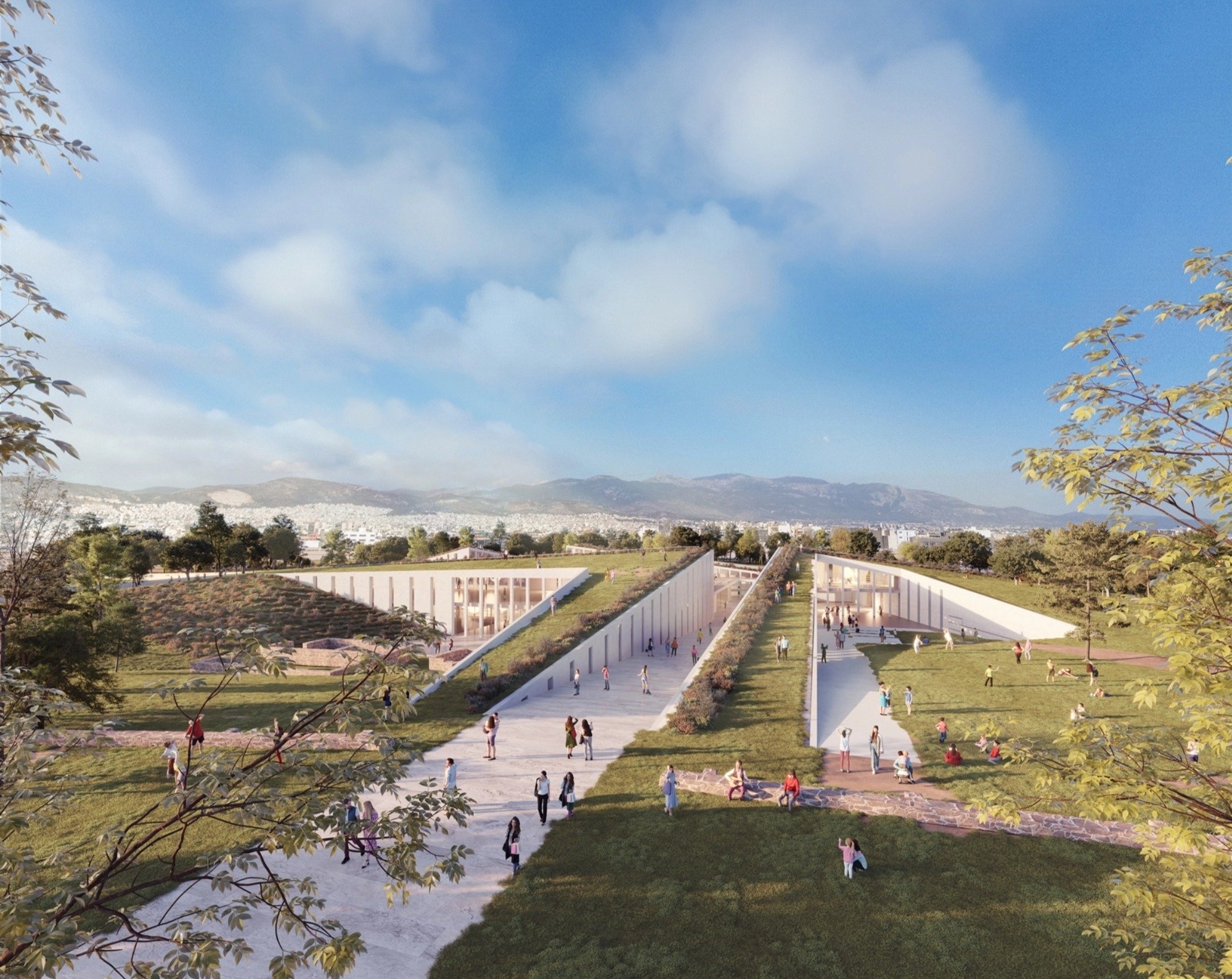An actually "invisible" complex that develops essentially underground, with green roofs that blend harmoniously with the natural landscape of the grove of the Platonic Academy, is the big winner of the Panhellenic architectural competition announced last August by Anaplasi SA for the Archaeological Museum of Athens. It is a brand new museum that focuses on the timeless evolution of the city of Athens, making use of archaeological treasures that for decades lay locked in the warehouses of our archaeological services due to lack of proper infrastructure.
The complex, open competition, which includes the urban planning, architectural and traffic management study, was completed in record time, with 17 complete, valid architectural studies submitted, and with the official announcement of the results (expected no later than early next week) we know the offices that received all three prizes and two commendations.
Giorgos Tsolakis, head of the office that won the first prize, expresses his enthusiasm. He already has experience with the design of the Museum of Marine Antiquities in Piraeus, as well as with a number of public and private, medium and large-scale projects in Greece and abroad, and is convinced that their proposal corresponds to the vision of Athens of the future.
The most important result is the idea of a semi-submersible museum, as most of the 13,500 square meters of the building programme is underground, leaving the fragile relationship between the precious green and open spaces of the Grove and the neighborhood almost undisturbed. "The architectural approach emphasizes above all the topography, urbanism and public archaeology, as it creatively integrates both the axes of the landscape and the structure of the city, incorporating on the one hand the archaeological findings and at the same time addressing the relationship between open and closed, public and private", Mr. Giorgos Tsolakis points out.
In fact, the city and the grove interact in the center of the site by creating four new sidewalks that, at their intersection, create a node of swirling movement and activities that are interconnected at different levels. This engraving creates a central public platform where visitors are distributed among four different wings that rise from the ground. "The square marks the beginning of the development of the emerging wings and reverses the typology of the ancient Greek temple pavilion, from an inward-facing building to an outward-facing one.
The arrangement of the facades refers to the stoic buildings of the archaeological findings of the Academy. The roofs emerge from the ground as a natural continuation, forming sloping, accessible surfaces that extend the grove's existing plantings while providing comfortable conditions for natural light and ventilation for visitors and workers."
What about antiquities?
The first question that comes to mind when talking to Giorgos Tsolakis is how to ensure an uninterrupted excavation of several meters deep while it is an archaeological park. "In the specifications of the tender, it was clear that the area where the museum is located was excavated in the past and is therefore free of antiquities.”.
He stresses that the main concept of the researchers was not to change the character of the public green space of the area. "The accessible roofs extend the surface of the grove and encourage the growth of shrubs and small trees that spatially and visually unify the planted public space. Native trees, which is a characteristic of the Athens landscape, are added to the existing plantings. The new configurations and development of the planted roofs will result in an increase and enrichment of the Grove's green balance, creating new conditions for outdoor activities for area residents and visitors."
In addition to the museum, it is also worth mentioning the outdoor sculpture gallery, which will develop at a lower level than the grove and relate the exhibits to the existing archaeological excavations, while in the southeastern part the existing sports activities will be transferred with an improved infrastructure, as well as the underground parking with a capacity of about 80 vehicles.









